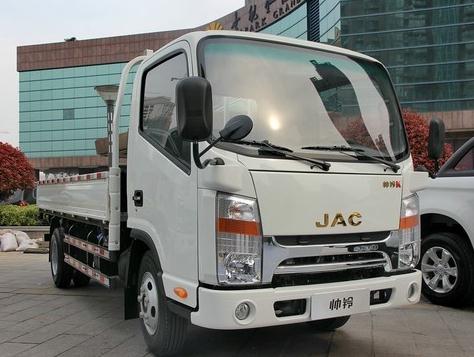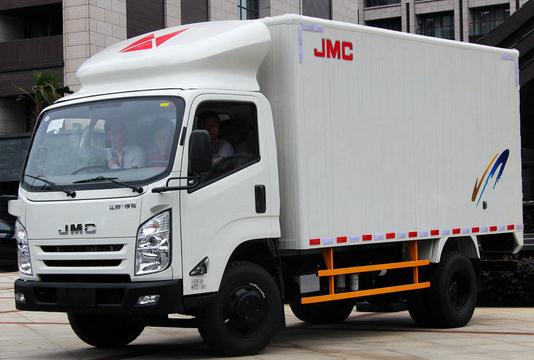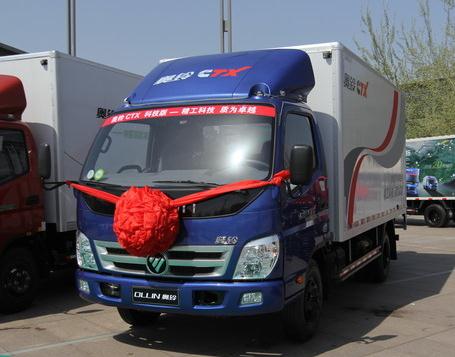Light trucks face the five severe challenges of the country
The past practice of the commercial vehicle industry shows that every upgrade and implementation of emission regulations is accompanied by severe market pains. In 2014, the implementation of the National IV emission standards made the light trucks in the subdivided areas of commercial vehicles consistently fall into the water. From January to July this year, the data showed that the industry as a whole fell by 13%. Is there the same logic in front of this sigh?

“Every time the emission upgrade is a reshuffle of the industry's existing structure,†said an industry insider who did not wish to be named. A number of chaos appeared throughout the country as the country switched to the country three years ago. “This is a manifestation of the lack of understanding of environmental protection laws by some companies and the limited ability of product technology reserves.†In recent years, as the relevant regulatory agencies have stepped up their enforcement, it is hard to play a big part in the policy. “It is time to test the strength of the company itself. State IV is not a "most critical situation."
Of course, it is not an alarmist statement. If the emission schedule is fulfilled, then the entire industry will face even more severe and even cruel challenges in the two years after the switch of the light trucks across the country, that is, in 2016, the national five emission standards.
The precursor has appeared. On May 25, Beijing Environmental Protection Bureau, Beijing Municipal Bureau of Quality and Technical Supervision, and Public Security Bureau of Beijing Municipal Public Security Bureau issued a joint announcement on the implementation of the fifth stage emission standard for heavy-duty diesel vehicles. On the 1st of the month, heavy-duty diesel vehicles that apply for the Beijing Environmental Protection Catalogue must meet the National Five Standard. The launch of Beijing V has enabled the country to move from a variety of messy conjectures into reality.
Undoubtedly, the five countries that have gone from their dreams have lethal force. Compared with the National IV emission standard, the National Automobile Vehicle Five standard further raised the requirements for emission control, in which the limit of nitrogen oxide emissions is strictly from 25% to 28%, the particulate emission limit is strictly 82%, and the The new indicator for pollutant control has a number of particle particles. In addition, the National IV standard stipulates that the sulfur content in one kilogram of gasoline is 50 milligrams, while the sulfur content in the national five standard is only 10 milligrams.

For all market participants, there are only two options - to leave or withdraw, there is no intermediate transition route, and the determination of the country to turn yellow to green is already evident. This is no different from the fact that the light truck industry has been silently drawing a clear line of elimination. Only those who meet the standards can gain entry qualifications.
The reason why the country is so cruel, the industry sources said that in the past, when the country switched to the country three, although the company's technical upgrade also put forward higher requirements, but the country three and the country two vehicles from the appearance point of view is not much difference, related management monitoring Institutions’ awareness of law enforcement or strength is not that high, so some companies can also be active in some marginal areas to win the buffer for their own development. With the implementation of four countries and further switch to the country five, TDCI (electrically controlled high pressure common rail) + DOC (oxidation catalytic converter) + SCR (selective catalytic reduction), TDCI (electrically controlled high pressure common rail) + EGR (exhaust gas again Circulation) + DPF (Particulate Dumper) + DOC (Oxidation Catalytic Converter) technology is widely used. The cost increase caused by technology upgrades is unavoidable. It is imperative to increase product competitiveness, and the grey area no longer exists. Close combat, only advanced players can take the initiative.
Numbers can speak. A front-line sales person in a light-duty truck company revealed that the implementation of the National IV has caused a subtle change in the pattern of light trucks. In the first half of this year, Futian, Jianghuai, and Jiangling, which are ranked in the top three, are still the only ones in which Jiangling has achieved a converse trend in the overall downturn of the industry.
“Before the price of Jiangling light trucks was relatively high, the price of light trucks generally rose after the upgrade to the National IV. Some brands even increased their prices even higher than JMC. In addition, since Jiangling has always insisted on high-end light trucks, its products are competitively competitive. The image is more deeply rooted in the hearts of the people. Therefore, the big rise is not something unexpected.†Analysis of the industry. In 2012, Jiangling light trucks had a market share of only 6%, and reached 15% in the first half of this year.

As for Futian, Jianghuai can continue to maintain the status of the rivers and lakes, indicating that the ice is not a day cold. As a big player in the light truck industry, the two companies have strong capabilities in market research, technology reserves, product distribution, and marketing organization. “Despite the poor market situation this year, JAC's State IV light trucks have contributed to the overall performance of the JAC commercial vehicle segment,†said the person in charge of the JAC light truck marketing company.
It is undeniable that some companies will use the gradual upgrading of emission regulations to become vested interests, because they are indispensable for achieving the country's five routes - electronically controlled high pressure common rail engine, EGR exhaust gas recirculation technology, SCR urea post-processing technology, etc. On the other hand, a lot of homework was done in advance.
"This can be seen as a game between ex-ante and post-event costs," said an industry observer. To understand this sentence in a more general language, perhaps it is to see whether the decision-making layer of the enterprise is more willing to choose whether to take precautions or to make up for it. “Because the State V will open a completely different market for light trucks. If we can say that the country’s three eras will be able to fight a price war, then the country’s four countries and the country’s five countries will have the final say on cost performance.â€
It is understood that the existing three national models to upgrade to the National IV, the average cost of each vehicle to increase five or six thousand dollars; to the five stages of the country, not only the increase in the cost of the purchase, the increase in the use of urea costs, it is more In front of the user's eyes a lingering groan. Up to seven or eight yuan a liter of urea and nowhere to find urea filling stations, allowing users "want to say love you is not easy"; However, if you do not regularly add urea, vehicle performance is bound to be significantly affected. "Pressurized mountain" light-card users can no longer buy as cheap as they once thought, but more importantly, "use up."
“In the final analysis, the upgrading of emission regulations and the series of problems that it brings, has fostered a new sense of vehicle use, and users are increasingly concerned about the cost of the vehicle throughout its life cycle, not just the cost of acquisition.â€
The pressure not only falls on the user, the company is more aware of the long way to go. In addition to the urgency of improving technology and training products, how to deal with further shrinking markets will be the number one problem facing every company. "It can be predicted that with the increase in the cost of the five light trucks in the four countries of the four countries, the user's update cycle will be extended, and the impact on sales volume can be imagined."
In addition, another well-known problem is that, after the implementation of the National Five, differences in oil products across the country will affect the actual operation of vehicles. Some companies saw this problem and deployed it. Jiangling Light Trucks Co., Ltd., Bosch, launched more than 100 dealers nationwide in 2014 to carry out targeted oil product testing projects so that the engine can better meet the actual application requirements of the national five-stage light truck users.
Market changes often go through a long process. In a sense, Guowu has accelerated the evolution of the light truck ecology, enabling the entire industry to finally withdraw from low-quality and low-cost disorderly competition and plan its participation in the market from a more long-term perspective. The way of competition. In this case, even if it takes time to wait, the result is still worth the wait.
Welding Wires,Welding Wire Price,Stainless Welding Wire,Stainless Steel Welding Wire
Luoyang Golden Egret Geotools Co., Ltd , https://www.xtcwelding.com